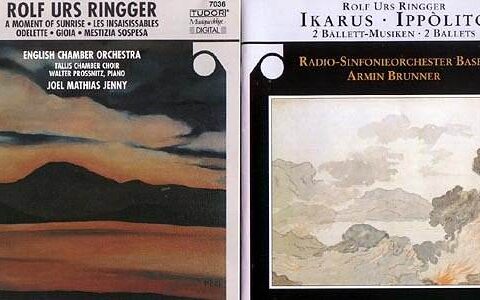 Composer: Anton Stadler
Composer: Anton Stadler
Works: Terzetten for three basset horns; Three Divertimenti on The Marriage of Figaro for three basset horns
Performers: Jean-Claude Veilhan (clarinet and basset horn), Eric Lorho (basset horn), Jean-Louis Gauche (basset horn), Catherine Delaunay (clarinet), Jean Jeltsch (basset horn)
Recording: 29 June to 1 July 1995, Chapelle Notre-Dame de l’Hor, Moselle
Label: K617
The collaboration between Anton Stadler and Wolfgang Amadeus Mozart resonates profoundly within the realm of late 18th-century chamber music, particularly through the pivotal role of the basset horn and basset clarinet. Stadler’s contributions to the repertoire, though not as widely recognized as Mozart’s, are essential in understanding the evolution of wind instruments during this period. This recording consolidates works by both composers, showcasing the basset horn’s rich, velvety timbre in arrangements that bridge operatic exuberance and instrumental delicacy.
The collection opens with Mozart’s Three Divertimenti, which are arranged for three basset horns. These selections, drawn from “The Marriage of Figaro,” illustrate Mozart’s deftness in transforming operatic material into chamber music. The performers—Veilhan, Lorho, and Gauche—capture the spirited essence of these works, notably in the “Non piu andrai” (Track 3), where the playful dialogue among instruments mirrors the charm of the original opera. The clarity of articulation and the bubbling vivacity of the ensemble are exemplary, with each player contributing to a cohesive sonority that honors the operatic source while exploring the unique textural qualities of the basset horn.
Stadler’s Terzetten, comprising eighteen short wind trios, adds a fresh layer to this recording. The technical demands of these pieces are considerable, yet the performers exhibit remarkable finesse and a keen sense of ensemble. The intricate interplay and conversational dynamics are particularly evident in Track 5, where Stadler’s writing showcases both the lyrical and technical capabilities of the basset horn. While the music may not reach the lofty heights of Mozart’s compositions, it brims with vitality and showcases Stadler’s inventiveness within the constraints of the idiom. The historical significance of these pieces, recorded here for the first time, positions this disc as an important document in the chamber music canon, shedding light on an underrepresented facet of Classical repertoire.
The recording quality is commendable, featuring clear and accurate sound that captures the nuances of the instruments, albeit with a proximity that sometimes emphasizes the players’ breaths and fingerwork. Such closeness enhances the listener’s experience, allowing for an intimate engagement with the music that might otherwise be lost in a more distant recording. The engineering team has succeeded in balancing the clarity of individual lines with the overall blend of the ensemble, although some might find the close mic’ing a tad intrusive.
This disc serves not merely as an academic curiosity but as a delightful diversion that invites listeners into a world where Mozart and Stadler’s musical dialogues flourish. The combination of historical context and the engaging performances creates a rich tapestry of sound that reflects both the collaborative spirit of the time and the individual voices of the performers. The vitality of this recording—both in its execution and its scholarly implications—enhances its value, making it a worthwhile addition to the collections of those who cherish the intricate beauty of chamber music from this era.



